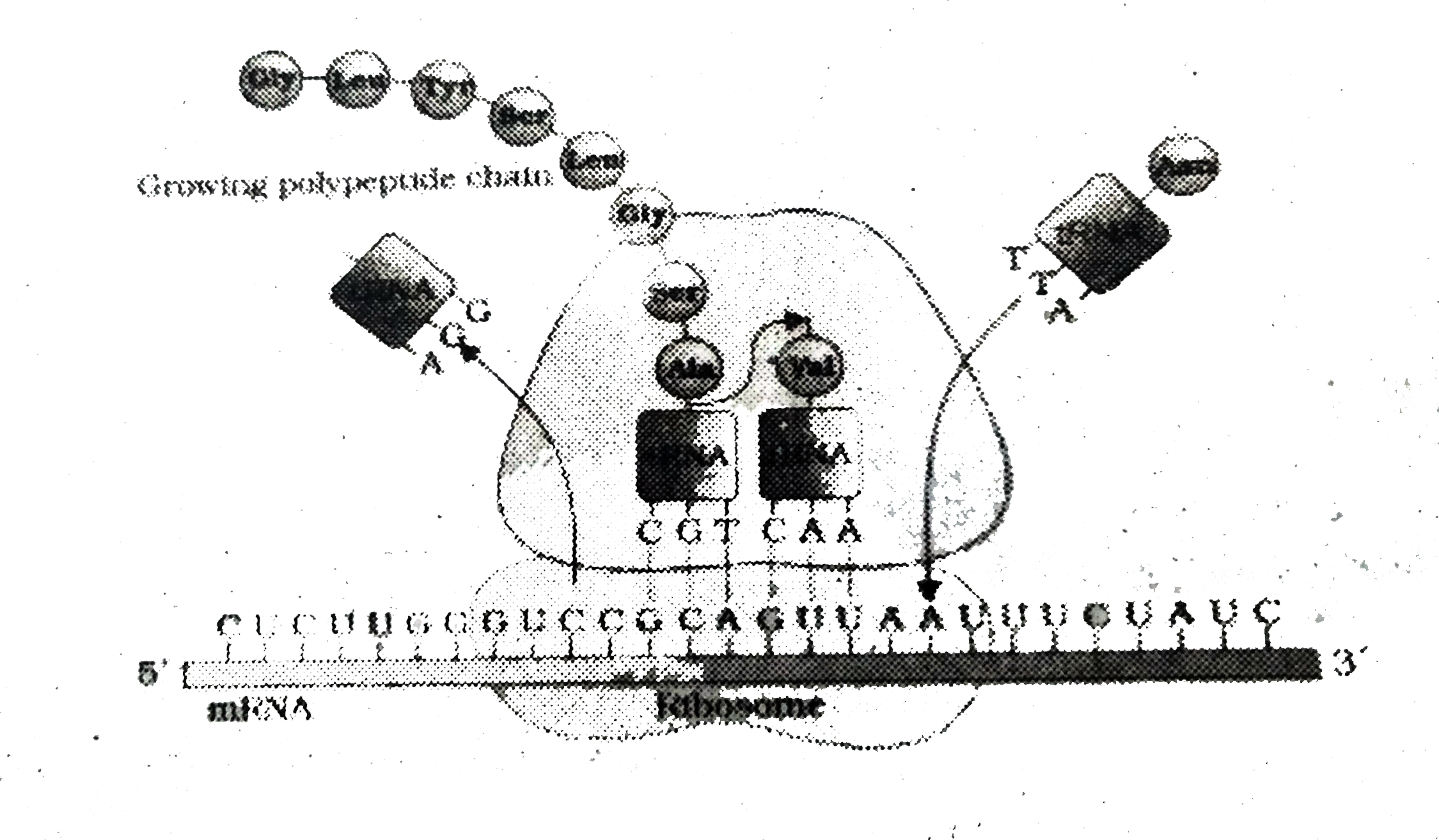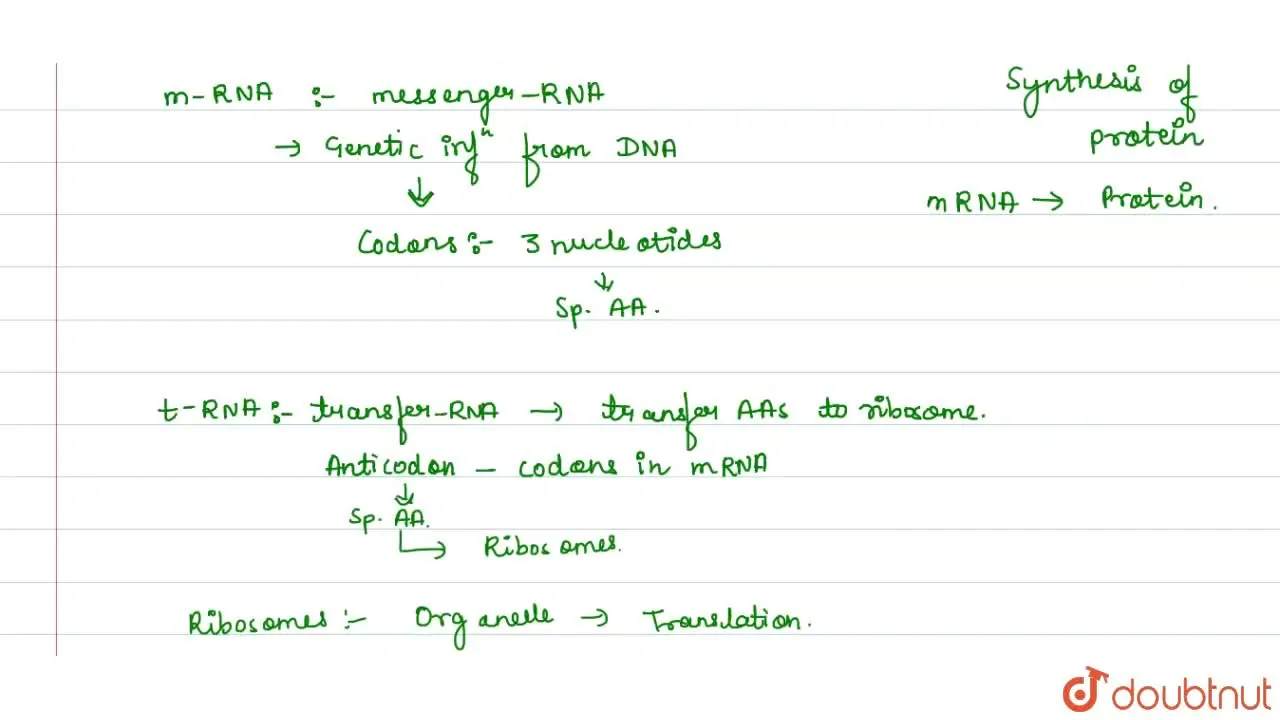How do m-RNA, t-RNA and ribosomes help in the process of translation ?
Translation is the process of polymerizing amino acid to form a polypeptide chain. The triplet sequence of base pairs in m RNA defines the order and sequence of amino acids in a poly peptide chain. Following three steps-:occur for translation to complete:
1. Initiation
2. Elongation
3. Termination
During the initiation of the translation, tRNA gets charged when the amino acid bins to it using ATP. The start Codon (AUG) present on m RNA is recognized only by the charged tRNA.
The ribosome acts as an actual site for the process of translation and contains two separate sites in a large subunit for the attachment of subsequent amino acids. The small subunit of ribosome binds tom RNA at the start codon (AUG) followed by the large subunit. It initiates the process of translation.
During the elongation process, the ribosome moves so as to leave the space for binding of another charged tRNA.
The amino acid -brought by t RNA gets linked with the Previous amino acid through a peptide bond, this process s continues to result in the formation of polypeptide chain.
When the ribosome reaches one or more stop codon (UAA, UAG, and UGA), the process of translation gets terminated. The. polypeptide chain is released and the ribosome gets detached from n RNA.

Related Playlists
Similar Questions
In t-RNA
View SolutionExplain the structure of t-RNA with the help of a diagram. Describe its role in the process of translation.
View SolutionName the RNA type which helps in the processing of rRNA in the nucleus
View SolutionTypes Of Rna And The Process Of Transcription
View SolutionExplain the process of RNA interference.
View SolutionRead the following statements and choose the correct opton.
I. RNA polymerase associates transiently with 'Rho' factor to initiate transcription.
II. In bacteria, transcription and translation takes place in the same compartment.
III. RNA polymerase I is responsible for transcription of t-RNA.
IV. When hn-RNA undergoes capping process, adenylate residues are added at 3' end in a template indepedent manner.
V. h-RNA is the precursor of m-RNA.View SolutionWhy is processing of RNAs necessary ?
View SolutionAssociation of m-RNA with several ribosomes is called
View SolutionRNA processing is :
View SolutionConsider the following statements with respect to translation.
A. Translation refers to the process of polymerisation of ribonucleotides.
B. The site of translation (protein synthesis) is ribosomes.
(D) An m-RNA also has untranslated regions (UTR) that are not translated.
Of the above statements :View Solution


